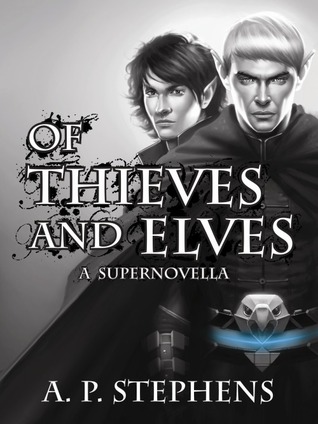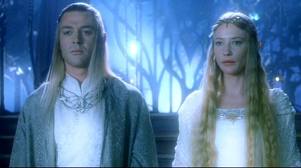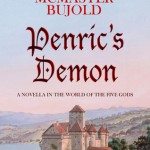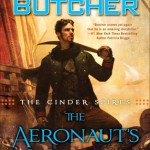 Format Read: ebook provided by the author
Format Read: ebook provided by the author
Number of Pages: 252 pages
Release Date: April 8, 2012
Publisher: Fanda Books
Genre: Epic Fantasy
Formats Available: Hardcover, ebook
Purchasing Info: Amazon | B&N | Kobo | Book Depository US | Book Depository (UK) | Goodreads | Author’s Website
Book Blurb:
A monumental tragedy has befallen the Clan of Ionor, an ancient brotherhood of elven warriors. Concerned when their Master does not reach his secretive business in a distant kingdom, the Elders learn that Tryn, their beloved leader, has been captured by a cutthroat gang of bandits known as the Steel Claw. Yet this is not the darkest of their tidings. The relic under the clan’s safekeeping, a weapon of terrible power that was forged by the gods themselves, is also missing. The Ionor dispatch Eonen, a headstrong Elder, and a young and talented apprentice, Tride, to rescue the Master and the relic by infiltrating the bandits’ stronghold-the formidable Fortress of Toppledom. As the two determined elves hasten into the unknown beyond their borders to restore balance and honor to their clan, they encounter the true darkness behind the matter-the very origin of the world’s evil. Allegiances will be twisted. The fates of many will be set into motion. And the destiny of one will be realized.
My Thoughts:
This was originally posted at Book Lovers Inc.
I had to check the definition of a novella. It’s the librarian in me. Because this is a fantasy, the definition that the Science Fiction and Fantasy Writers of America use should suffice. SFWA defines a novella as having a word count between 17,500 and 40,000 words. At 252 pages, believe me, Of Thieves and Elves is a novel. A pretty decent one, but a novel.
About that novel…if there is one basic plot (as opposed to 7 or 10) that plot is “Who am I?” Of Thieves and Elves is a “Who am I?” story. It’s the hero’s journey. In this case, the hero just happens to be an elf.
Tride is a young man, well, young elf, and he’s a bit different from everyone else in his clan. That’s what makes it his story. Tride is an orphan, a foundling. He’s also visibly different, but nothing drastic. He’s just dark when everyone else is fair. He’s also always a bit disheveled, because he’s always being shoved, kicked or beaten by his fellow students, and never draws attention to it. No one cares.
Except Eonen. His family fostered Tride. And when Eonen needs a young warrior to assist him on a secret mission, it is Tride whom he unhesitatingly chooses as his companion. But it’s a secret mission, and Tride is too young to keep informed. Elders always know best. Yeah, right.
Even in buddy stories there are misunderstandammits. When the buddies are warriors, those misunderstandings usually get people killed.
When the story is the hero’s journey, the person who gets killed is always the mentor. Eonen follows in a long and storied tradition.
So what do we have in Of Thieves and Elves? A quest, a stolen relic, a missing high council member, a daring rescue attempt, and, of course, it all goes horribly wrong or there wouldn’t be a story. They run into betrayal, terrible magic, and a fortress full of evil bandits.
The story is generally good fun in the classic high fantasy tradition. The bandits are really evil, and their leader is so crazy he’s stupid with crazy. In the process of rescuing the people that the bandits have enslaved, Tride starts becoming the hero he was meant to be.
There’s a definite sense that this is going to be a trilogy. The story certainly didn’t wrap up at the end. And it left way more questions than answers about Tride’s origins and the motives of the big, bad evil dude. The reader should want answers.
But I took some time to think. This is a buddy story. Eonen teaches his apprentice Tride the things he’ll need to know to become a hero, even if that’s not what Tride thinks is going to happen. Big brother and little brother. Looking back, I realized that there are not just no women with agency anywhere in this story, but there are no women except the downtrodden slaves that Tride rescues and the victims that the bandits are raping.
 The Learners that Tride trains with in the Elvish stronghold are all male. The Elder Council that Eonen is part of are all male. We see no females with any authority anywhere. There were no female bandit captains. While I don’t actually want to see a woman portrayed as that evil, some female would have had big enough brass ones.
The Learners that Tride trains with in the Elvish stronghold are all male. The Elder Council that Eonen is part of are all male. We see no females with any authority anywhere. There were no female bandit captains. While I don’t actually want to see a woman portrayed as that evil, some female would have had big enough brass ones.
Tolkien could get away with this, and he’s no longer around to argue with. Besides, even Celeborn answered to Galadriel. In contemporary-written fantasy, if a society has no females of agency, there needs to be a reason. Or they need to be dwarves, where both genders have beards and outsiders aren’t meant to know.
I give Of Thieves and Elves 2.5 stars for telling a pretty good story but shooting a whole quarrel of arrows through the Bechdel Test.
***FTC Disclaimer: Most books reviewed on this site have been provided free of charge by the publisher, author or publicist. Some books we have purchased with our own money and will be noted as such. Any links to places to purchase books are provided as a convenience, and do not serve as an endorsement by this blog. All reviews are the true and honest opinion of the blogger reviewing the book. The method of acquiring the book does not have a bearing on the content of the review.










Bechdel Test for the win!
As for your comment that Tolkien could get away with it: No, no he couldn’t. Just because a book is considered a classic, there is no excuse for blatant misogyny and racism.
There are plenty of SF/F classics that manage not to be a cover for the author’s baseless hatred of women. Le Guin, Tiptree, Sturgeon, Herbert, Norton, . Do you see where I am going here?
Well, Tolkien certainly isn’t around to argue with, at least not without a seance. And while he didn’t have near enough female characters in positions of authority or agency, he was a creature of his own time and place. Which is explanation rather than excuse.
Women did exist in LOTR. They weren’t prominent with a couple of token exceptions, but they were present and obviously part of society. Maybe not in authority, but definitely part of the fabric. There are both gaffers AND gammers in Hobbiton.
In Of Thieves and Elves, the ONLY females we see are rape victims and downtrodden slaves. Period.
Before the 1960’s, (Tolkien wrote LOTR between 1937 and 1949), it absolutely qualified as a failure of vision not to have some females in more prominent roles, but it did reflect society as a whole in his time. Does that make it misogynistic? That’s a bit harder for me to judge.
I read this book after reading A.P. Stephens other books -The White Shadow Saga- they all tie into together. There are women with leadership roles in them-significantly authority in fact. Of Thieves and Elves sets the tone for the White Shadow Saga books. Which I recommend reading-I enjoyed them as did my teenagers.
AS an avid SF/F reader I do not find the need to have a women in an authority role for all that I read or watch-It’s a story not a political platforms.
I think you might be misunderstanding the Bechdel Test. It’s not about prominent women, or political platforms – it’s about world-building and characterization. Unless you are specifically writing in a gender-less universe, the odds that you cannot have two named females who do, well, anything, is pretty shitty story-telling.
If I wrote a book about an orphan and her best friend going on some epic quest, with lots of interaction with other people along the way, you would expect some of them to be male. It would be wholly unbelievable for these two girls to never interact with men (are they invisible? mute? dead? sequestered?).
That’s the point of the Bechdel test. Not that women have to have great roles, or be feminist, or make statements about society. Just for the writers to pass a really very low bar indicating they put a little bit of thought into the world-building. If, for example, there are no women, you need to address why. What about this society/culture/world/time period made it so all the women vanished?
A seance to argue misogyny with Tolkien? Sign me up!
I hadn’t really considered Tolkien’s publication date. I think all my “boo-yah not sexist” comeback authors were a good 20+ years later. Damnit! There goes my debate.
I would also love to sit in on that seance with Tolkien. I wanted someone on the Fellowship that I could identify with. Rather desperately.
But I imagine the difference in world-view between someone born in 1892, as Tolkien was, and someone born in 1912, as Andre Norton was, was probably significant. Plus Norton had a vested interest changing the status of women, that Tolkien wouldn’t have had.
I agree that if it is a male dominated world, there should be an explanation for it. If one colour of the rainbow is missing, we would be questioning why.